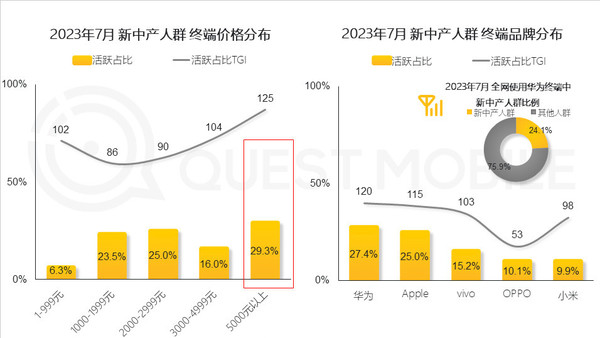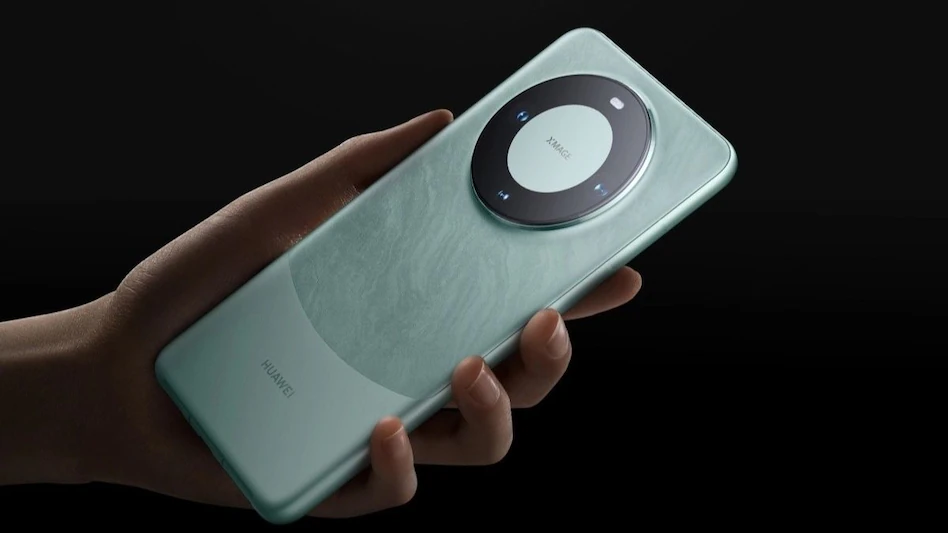A recent report by QuestMobile sheds light on the smartphone preferences of China’s emerging middle-class demographic, highlighting the choices among high-end devices priced above 5000 yuan ($685).
Market Share Breakdown: New Middle-Class Preferences
Notably, Huawei emerges as the preferred brand in this segment, commanding a significant 30% market share. Apple follows closely, with 25% of the new middle-class population opting for their smartphones, while Vivo captures a respectable 15.2% share, indicating the growing popularity of Vivo’s high-end offerings in recent years.

Huawei’s journey into the high-end smartphone market is marked by its historical evolution. It began with the inaugural Huawei Mate phone, featuring the Kirin K3V2 processor, albeit with less-than-ideal performance and power consumption. Subsequent releases, such as the Huawei Mate 20 series, powered by the Kirin 980 processor, solidified Huawei’s position in the high-end segment.
In 2019, the Huawei Mate 30 series, equipped with the industry’s pioneering integrated 5G SoC Kirin 990, established Huawei as a leader in the smartphone industry. The Kirin 9000 processor, introduced with the Mate 40 series, further cemented Huawei’s “far ahead” status.
The trend of Huawei’s high-end smartphone dominance had been unshaken until the recent launch of the Huawei Mate 60 Pro, featuring the new domestic Kirin 9000S (know more about this chip from here) processor. This release marked the resurgence of Huawei’s high-end smartphones, reaffirming their leadership in this category.
However, it’s crucial to note that this trend faced a significant disruption due to the US-China chip war and the subsequent US government ban on Huawei. This ban hampered Huawei’s ability to innovate and maintain its position as a top contender in the smartphone market.

The turning point came when Huawei found a solution to this challenge. Huawei Technologies, in collaboration with China’s leading chipmaker, SMIC, successfully developed an advanced 7-nanometer processor to power its latest smartphone lineup. This homegrown chip represented a significant breakthrough for China, reducing its reliance on US companies for crucial semiconductor technology. With this innovative development, Huawei demonstrated its resilience and determination to maintain its high-end status in the fiercely competitive smartphone market.
It is essential to highlight that the Huawei Mate 60 series currently offers three models: the standard version, Pro, and Pro+ models, with prices starting at 5499 yuan ($754).
RELATED:
- Ego Power+ Mini Bike unveiled as the brand’s first electric two-wheeler
- Noise Air Buds 3 & Buds Pro 3 goes on sale in India
- MediaTek continues to lead smartphone AP processor market for 12th consecutive quarter
- Huawei Mate 60 Pro Plus vs Pixel 7 Pro: Specs Comparison
- Samsung Galaxy Z Fold5 vs Huawei Mate X5: Specs Comparison
- Huawei Mate 60 Pro vs Xiaomi 13 Ultra: Specs Comparison
(Via)







